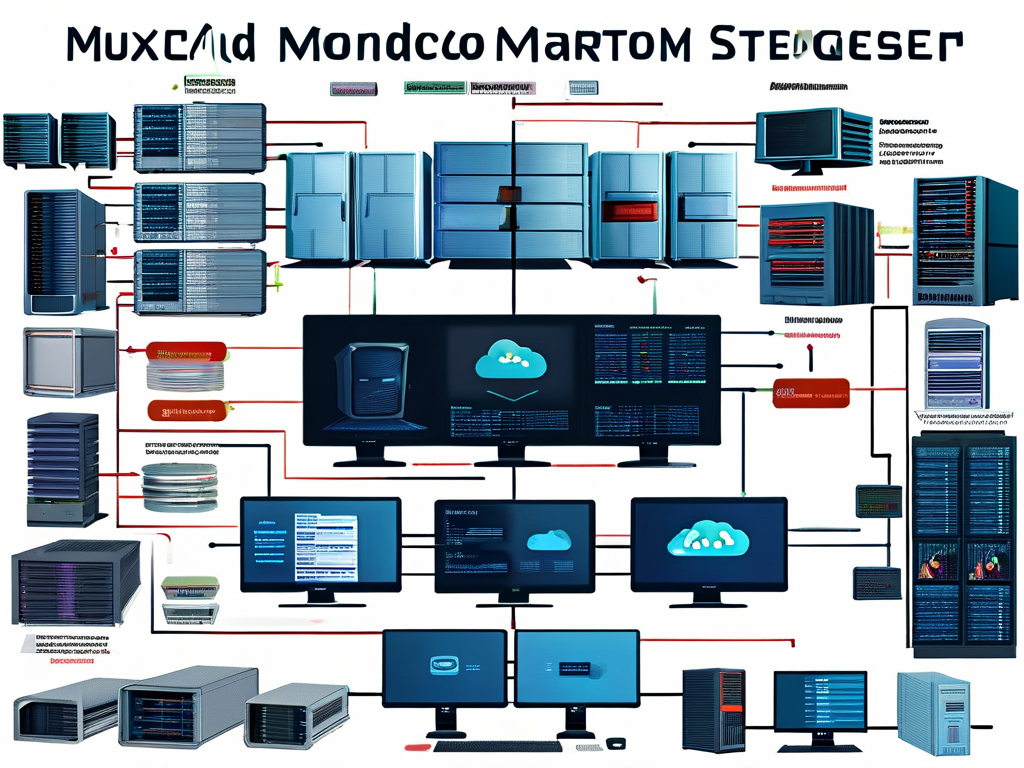As enterprises increasingly adopt hybrid cloud environments, the need for robust monitoring systems has become critical. A well-designed hybrid cloud monitoring architecture ensures seamless operations across public and private cloud platforms while maintaining performance visibility. This article explores key components, implementation challenges, and optimization techniques for building an effective monitoring framework.

Foundations of Hybrid Cloud Monitoring
Hybrid cloud monitoring systems bridge the gap between on-premises infrastructure and third-party cloud services. Unlike traditional setups, these architectures require dynamic data collection mechanisms to handle diverse environments. Core elements include:
- Multi-Platform Agents: Lightweight agents deployed across AWS, Azure, VMware, and bare-metal servers to collect metrics.
- Unified Data Lakes: Centralized repositories like Amazon S3 or Azure Data Lake for storing logs and performance data.
- Cross-Cloud Analytics Engines: Tools such as Elastic Stack or Splunk that normalize data formats for consistent analysis.
A sample agent configuration for Kubernetes clusters might use this YAML snippet:
monitoring-agent: cloud_providers: [aws, azure] metrics: [cpu_usage, memory_utilization] reporting_interval: 60s
Architectural Challenges and Solutions
Data synchronization remains a primary hurdle in hybrid monitoring. Latency between on-premises systems and cloud endpoints can create visibility gaps. Enterprises often implement edge computing nodes to preprocess data before transmission, reducing bandwidth strain. For instance, a manufacturing company might deploy edge gateways at factory sites to filter irrelevant machine metrics before sending critical data to the central cloud dashboard.
Security integration presents another complexity. Monitoring systems must comply with varied encryption standards across platforms. A banking institution’s architecture could employ TLS 1.3 for public cloud communications while using hardware security modules (HSMs) for private data center encryption. Role-based access controls (RBAC) ensure that only authorized teams view sensitive performance metrics.
Performance Optimization Techniques
Adaptive thresholding algorithms significantly improve alert accuracy in hybrid environments. Unlike static thresholds, these machine learning-driven models account for seasonal workload patterns. A retail organization’s monitoring system might automatically adjust CPU usage alerts during holiday sales peaks, preventing false positives.
Real-time topology mapping tools like SolarWinds or Datadog provide visual representations of interdependencies between cloud and on-premises resources. When a latency spike occurs in an Azure-hosted application, the system instantly identifies correlated bottlenecks in on-premises database clusters.
Future-Proofing Strategies
As serverless computing and microservices gain traction, monitoring architectures must evolve. Embedded monitoring in CI/CD pipelines enables proactive issue detection. A telecom provider could integrate performance checks into their deployment workflow, blocking code releases that exceed predefined error rate thresholds.
The emergence of quantum computing introduces new monitoring dimensions. While still experimental, forward-looking architectures are testing post-quantum encryption methods for metric transmission. Early adopters combine lattice-based cryptography with existing monitoring protocols to future-proof data integrity.
Implementation Best Practices
- Phased Deployment: Start with non-critical workloads to test monitoring coverage before expanding to production systems.
- Vendor-Neutral Formats: Use OpenTelemetry standards to avoid lock-in with specific cloud providers.
- Capacity Planning: Allocate 20-30% extra storage for unexpected metric spikes during cloud migration phases.
A financial services company achieved 40% faster incident resolution after redesigning their hybrid monitoring stack. By correlating Azure Kubernetes Service (AKS) metrics with on-premises transaction logs, their team reduced mean time to diagnosis (MTTD) from 45 minutes to under 15 minutes.
Effective hybrid cloud monitoring architectures demand careful balancing of flexibility and control. By adopting adaptive data collection methods, implementing cross-platform security protocols, and leveraging AI-driven analytics, organizations can maintain operational excellence in complex cloud environments. As technology landscapes evolve, continuous architectural refinement will remain essential for sustaining performance visibility across hybrid infrastructures.







